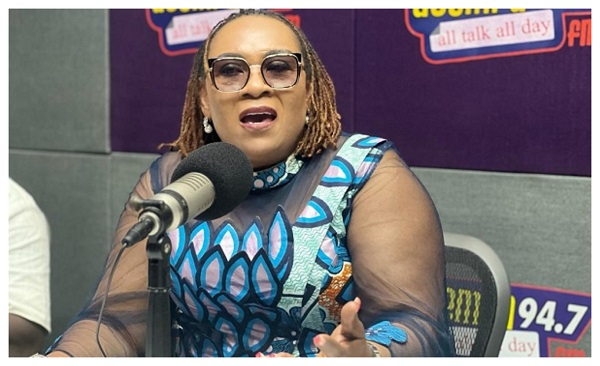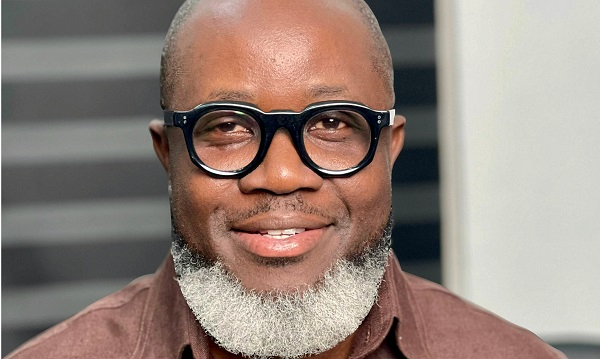How Fashion Brands Are Bringing Collaboration to the Virtual World
Global superstar Travis Scott is known for his concerts that not only draw the crowd, but feel like a million-person mosh pit. His performances have always toed a volatile line between being a welcome place to expel bottled-up youthful energy, and hardcore punk shows where many audience members expect to come home bloodied after catching a stray elbow to the face. But whereas dynamic punk shows often attract a niche audience who know what to expect, Travis Scott is a bona fide A-list celebrity, and that type of hard-hitting concert isn’t meant for the masses. His Astroworld festival went down in infamy in November 2021 after an unfortunate crowd crush incident left eight people dead at the scene, with two more dying in the hospital due to injuries shortly after. But even before then, Scott had a penchant for stoking a crowd’s craziest impulses, like a May 2017 birthday performance at New York City venue Terminal 5, where an attendee jumped from a second-level balcony to the cheering crowd below, breaking a leg in the process but earning special recognition from Scott, who gifted him a ring worth thousands of dollars as the fan was wheeled out of the venue on a stretcher. As Scott raps on his hit single “Antidote,” indeed: “Anything can happen at the night show.”
And although attending one of Scott’s live shows is laced with the risk of bodily harm, hundreds of thousands of eager fans still flock to his concerts for the thrill and spectacle of it all. But there was at least one of Scott’s performances where almost certainly no one was hurt, and it was arguably his most exciting and innovative performance to date. It didn’t necessarily involve intricate stagecraft—although he’s certainly pushed those boundaries with animatronic birds, dystopian tribal rock formations, and roller coaster-inspired stage designs—nor did it involve booking a physical venue. And yet, the five-day performance netted a total of 12.3 million attendees, even though global lockdown mandates had most of the world catching cabin fever indoors. That’s right, one of Travis Scott’s biggest performances took place virtually in April 2020, when he took over the massively popular multiplayer shooting game Fortnite for his “Astronomical” show, a live event that invited the game’s global community of players to tune in and turn up for an interactive experience that was replete with its own kind of digital concert merch.
Your Highsnobiety privacy settings have blocked this YouTube video.
While the game itself has been free-to-play since it was released in 2017, it’s created a unique economy around skins and digital products that allow for a limitless degree of customization, with its community of over 650 million players converting real money into the in-game V-Bucks currency to get limited-edition goodies that range from Nike sneakers to Balenciaga outfits, or, in the case of Travis Scott, exclusive skins, a digital version of his highly-sought after Jordan sneakers (for much less than the retail price of the physical versions), and a custom “emote” that lets players recreate the viral moment of him shaking a microphone stand over his head. As of 2023, Fortnite has managed to generate over $20 billion in revenue in selling these kinds of in-game wearables.
But it’s also led to real-life interpretations of in-game gear, like Balenciaga hoodies and tees emblazoned with the game’s logo, commanding luxury price tags of over $1,200 for a hoodie. Meanwhile, items inspired by Balenciaga’s Fall 2021 collection went on sale as in-game skins, turning runway grails like the armor-inspired boots and glaives into digital costumes that looked surprisingly at home in a video game. This digital tie-in with Fortnight was fitting, considering Demna’s collection debuted with an interactive custom video game of its own, titled “Afterworld: The Age of Tomorrow.” Players could explore a virtual world, peruse pixelated racks of a virtual Balenciaga flagship store, and gawk at NPCs dressed in the latest collection, turning fashion into a game during a time when traditional fashion shows were not feasible.
Your Highsnobiety privacy settings have blocked this Instagram post.
The use of a video game as a medium for a fashion show exemplified how brands could adapt to changing circumstances and consumer behaviors by embracing digital platforms. It also highlighted the potential for immersive experiences to showcase products in a way that traditional formats cannot. But it also signaled a shift in how consumers engage with products and celebrities. The democratization of fashion isn’t just about accessibly priced collaborations with mass market brands like Uniqlo, Target, and H&M, but also about making brands relatable to different audiences and communities. Louis Vuitton and Dior were able to court sneakerheads and streetwear enthusiasts through their partnerships with Nike, Jordan Brand, Supreme, and Shawn Stüssy, but working with emerging platforms like video games, television shows like The Simpsons, and storied production companies like anime powerhouse Studio Ghibli not only endears a brand to an unlikely audience, but serves to add a welcome dose of personality to a label.
The democratization of fashion isn’t just about accessibly priced collaborations, but also about making brands relatable to different audiences.
For Louis Vuitton creative director Nicolas Ghesquière’s Spring/Summer 2016 collection, there were plenty of references to anime shows like Sailor Moon and Neon Genesis Evangelion, as well as video game franchises like Final Fantasy. So it was fitting that Lightning, the fiercely-fashionable, pink-haired protagonist from Final Fantasy XIII, was cast as the face of its “Series 4” campaign. This partnership showcased Louis Vuitton’s willingness to embrace digital culture and appeal to a younger, tech-savvy demographic. By featuring a digital character in its campaign, Louis Vuitton challenged traditional notions of brand ambassadorship and highlighted the potential of virtual influencers in fashion marketing.
Beyond static, high-gloss images, the campaign included rich visuals of Lightning modeling the latest collection, and even went as far as having the character conduct an interview with London-based publication The Telegraph to further flesh out the unique partnership. For his part, Ghesquière not only made his genuine appreciation for video games and anime apparent—lending him a certain geeky, off-beat appeal—he went on to describe Lightning as “the perfect avatar for a global, heroic woman and for a world where social networks and communications are now seamlessly woven into our life.”
Like any collaboration, what sells a successful partnership is the authenticity of it all. Ghesquière’s genuine love for anime and video games made what could seem like a hokey marketing stunt feel elevated and mutually appreciative. Travis Scott’s larger-than-life concerts set the stage for his virtual Fortnite takeover and the digital mayhem that ensued.
Even forward-thinking innovators like Hideo Kojima, the Japanese game designer often considered a true auteur of video games, has cultivated a unique community of collaborators and confidantes that show up across projects like Death Stranding. Kojima’s longtime relationship with conceptual apparel designer Errolson Hugh of ACRONYM stems from a camaraderie built on like-mindedness. Hugh’s highly technical garments are intricately considered and engineered with no shortage of utilitarian details. Likewise, Kojima’s games are known for subverting tropes and introducing novel mechanics while subconsciously sending players very prescient social commentary that clearly comes from Kojima’s unique understanding of global politics and technological shifts. So when the two collaborate on a capsule collection of clothing inspired by one of Kojima’s games or when Kojima digitizes Hugh and casts him in a virtual cameo, it essentially amounts to a very layered wink-and-nod.
There has been no shortage of successful collaborations in the gaming community, like 2017’s Gran Turismo collaboration featuring custom car skins designed by Undefeated, A Bathing Ape, and Anti Social Social Club (whose founder Andrew Buenaflor—better known as “Neek Lurk”—happens to be a car collector), with coordinating IRL apparel collections to match. Meanwhile, Fortnite continues to court many fashion collaborators from Ralph Lauren to Nike, whose digital wearables continue to be in high demand in the game. And then there’s one of the most unexpected successes in the fashion/video game space, which emerged from Roblox, an aesthetically lo-fi game with blocky graphics and LEGO-like characters..
Like Fortnite, Roblox is a massively popular online multiplayer game. Its audience tends to skew significantly younger, and the game’s world is divided into different “Experiences” that each have a specific environment and rules of play. One such Experience is called Dress to Impress, and was designed by a user mononymously known as Gigi who began working on it when she was just 14—which means that she was around 16 or 17 when it fully launched in November 2023. The game pits players against each other in a fashion competition, where they are all given a theme and 325 seconds to style an outfit. When time runs out, players are judged by their peers in a real-time fashion show, and whoever gets the most votes wins the round.
Your Highsnobiety privacy settings have blocked this YouTube video.
Dress to Impress was one of the fastest Roblox Experiences to reach one billion visits—a number that doubled in less than a year. It became a favorite of popular video game livestreamers like Kai Cenat and Pokimane, YouTubers like James Charles, and even celebrities like Madison Beer, who credited the game with helping her mental health. Its simplicity and community-oriented aspect made it a favorite among numerous communities, and it even launched a collaboration with Charli XCX to help promote her 2024 album brat, whose bright-green cover became a viral sensation itself.
The popularity of Roblox’s Dress to Impress is helped by the fact that one doesn’t necessarily need an expensive game console to play it. You could download the Roblox app on your phone and, like Fortnite, enjoy an entirely free-to-play experience without spending a dime. But like Fortnite’s V-Bucks, Roblox also employs an in-game currency of Robux to augment the user experience and buy premium cosmetics and higher-tier statuses. The success of these platforms is proof that purchases in a digital world are often informed by the very same tastes (and insecurities) that drive physical fashion and luxury shopping IRL: it isn’t enough for some people to just be part of a community, some are willing to pay that extra price for something that feels just a bit more exclusive.
Of course, some companies are cutting out the gaming community entirely and going straight to the source: anyone with a social media account. Technology and fashion have always tried to feed off each other’s energy. Both are industries heavily reliant on selling new products by convincing consumers that what they currently have is in dire need of an update. Previously, these partnerships focused on hardware collaborations like 2007’s Prada Phone by LG, and Samsung’s collaborations with labels like Maison Margiela and Thom Browne. Apple had a good track record of eschewing these seemingly flash-in-the-pan collabs, knowing that its brand cachet in and of itself was enough to sell its industry-leading phones, tablets, and computers. Yet it broke the mold when it made an earnest attempt to break into wearables with the Apple Watch, choosing a collaborative fashion partner in Hermès, a luxury label known for its equally uncompromising standards.
But increasingly, as we saw with Roblox and Fortnite, the emphasis is less on merging tech and fashion in the real world, and more on helping consumers express themselves in the so-called metaverse. In 2014, independent company Bitstrips launched its cartoonish Bitmoji app, which allowed users to create virtual avatars for use across text messages and social media. It was acquired in 2016 by Snapchat to the tune of $100 million, who expanded its offerings to include digital fashion from brands like Carhartt, Nike, Prada, Off-White, and Levi’s. Using real-world money, users could purchase these brands’ digital garments for their avatars to wear. Not to be outdone by the competition, Meta’s Mark Zuckerberg tapped his own fashion consigliere Eva Chen on a series of high-profile partnerships with Prada, Thom Browne, and Balenciaga, which meant that users across all of Meta’s platforms didn’t just get to show off their latest fit pics on Instagram, but could also dress their avatars in similarly high-end duds. The result is a digital landscape where consumers can emulate at least one aspect of the one percent: a fragmented wardrobe. l Only instead of their luxury wardrobes living in multiple homes or across several continents, they are split between different social platforms.
The emphasis is less on merging tech and fashion in the real world, and more on helping consumers express themselves in the so-called metaverse.
As collaboration culture continues to evolve, new trends are emerging that will shape its future. Brands are exploring unconventional formats, embracing technology-driven innovations and redefining what ownership and value mean. RTFKT Studios, a digital fashion and collectibles company, has been at the forefront of merging fashion with technology. One of the more prominent beneficiaries of the COVID-era boom for Non-Fungible Tokens (NFTs), RTFKT stood out by creating collectibles rooted in the aesthetics of sneakers and streetwear, but opting for models that weren’t just mock-ups of physical shoes, but fantastical works that took inspiration from superhero armor, high-performance cars, surrealist art, and video game graphics that gave them a wholly new appeal. Their collaboration with 18-year-old artist FEWOCiOUS in February 2021 resulted in the release of virtual sneakers priced between $3,000 and $10,000. The collection sold out within minutes, generating $3.1 million and highlighting the burgeoning market for digital fashion. Collaborations with high-profile artists like Takashi Murakami and sneaker industry figures like jeffstaple gave them even more credibility in both spaces—so much so that, by December 2021, the company was acquired by Nike for an undisclosed sum.
As part of that initial Nike acquisition, RTFKT led the way into so-called “phygital” collaborations, which blend physical and digital products. The RTFKT x Nike partnership, for instance, combines sneakers with NFT technology, creating virtual assets that can be traded or worn in the metaverse, or redeemed for a physical product whose legitimacy could be verified on the blockchain. It set a new stage for what wearables could be, and a potential way for the sneaker resale market to continue to combat fakes.
Moreover, the rise of NFTs presents opportunities for brands to offer exclusive digital assets that consumers can own and trade. These digital collectibles can serve as modern-day status symbols, much like luxury handbags or limited-edition sneakers. By 2022, Nike had launched its .SWOOSH (pronounced “Dot-Swoosh”) platform dedicated to the Web3 space, signifying the brand’s commitment to embracing blockchain technology to enhance consumer engagement. By incorporating RTFKT's innovations into the platform, such as allowing customers to buy, trade, and wear digital versions of their products, Nike not only added a new, interactive layer to the consumer experience, it also opened new revenue streams through the sale of digital merchandise. Here, the metaverse represents another frontier for collaboration, pointing to a future where collabs are not just about products but about immersive, multidimensional interactions.
On the flipside, Web3 has already seen some volatility. Just three years after getting acquired by Nike, RTFKT announced it would be ceasing operations in early 2025, and the .SWOOSH rollout tying physical products to online blockchain transactions has not been a smooth process. Not only is this due to technical hiccups, but likely the regulatory nightmare that is seemingly just beginning to unfold as multiple world governments and private companies contemplate how they could possibly regulate a completely alternate economy. That said, in recent months cryptocurrency has not only bounced back from what many thought would be a final crash, it has been surging to new levels. Time will tell how this exciting new movement will pan out, but it’s evident there is as much to be terrified of as there is reason for excitement when it comes to implementing a solid Web3 strategy at scale.
Perhaps that’s why many traditional luxury companies are looking at alternate ways to expand their footprint into the experiential. While many brands have happily explored new technological frontiers and digital products as a way of building awareness and acquiring a new audience, some have gone in a completely analog direction. LVMH has staked its claim to becoming a pop cultural brand, not just by working with global artists like Pharrell Williams to creatively helm Louis Vuitton’s men’s output, but also through partnerships with sporting events like the NBA Championships, the FIFA World Cup, and the 2024 Olympics in Paris. The custom Louis Vuitton trophy cases and bespoke trunks holding the Olympic medals propelled the brand to new aspirational heights, aligning its rich heritage with some of humanity’s greatest physical achievements. It also elevated the perception of sports as a cultural touchstone, demonstrating how fashion can pay homage to an audience’s shared passions.
In the same manner that a post-COVID boom has led to the return of packed sporting events, it has inspired a new era of travel and lifestyle, inspiring brands and hospitality companies alike to work together in new ways. By 2026, Louis Vuitton plans to open its first-ever hotel in Paris. Taking over an old office building on the Champs-Élysées, architects completely concealed the construction site behind what appears to be a giant Louis Vuitton trunk, redefining the storied street in an eminently recognizable way while the world waits to see what’s currently transpiring inside. Vuitton is following in the footsteps of labels like Ralph Lauren and Restoration Hardware, two American lifestyle brands who have successfully expanded into the realm of hospitality with lauded restaurants, and in the case of Restoration Hardware, its first hotel opened in the heart of the Meatpacking District in New York City. It has since announced plans to expand the concept into other parts of America and the English Cotswolds, giving the upscale American housewares purveyor an even more luxurious air.
Hotels have always been about more than just a place to sleep—the rise of boutique hotels and membership clubs like Soho House, Ace Hotel, Casa Cipriani, and The Standard proved that travelers are willing to pay a premium for spaces that feel culturally relevant and creatively designed. Streetwear and fashion brands entering this space are rewriting the rules of hospitality. This is the same ethos that informed Kith’s expansion into restaurants beyond its successful Kith Treats concept. Building off of previous partnerships with Major Food Group, founder Ronnie Fieg has leveraged his longtime friendship with Jeff Zalaznick into opening outposts of its famous Sadelle’s restaurant in Miami, Paris, and Toronto, giving foodies and sneakerheads something in common—creating a hyped-up experience in a place where it previously didn’t exist.
Similarly in 2021, Pharrell Williams teamed up with David Grutman to open The Goodtime Hotel in Miami, a 266-room Art Deco-style property with plenty of pink pastel accents that perfectly aligns with Pharell’s candy-colored aesthetics. It also marked the debut of NIGO’s longtime partnership with Blue Bottle Coffee. Consisting of two unique coffee blends and a small capsule collection of apparel, it dovetailed with the introduction of a Blue Bottle Cafe inside NIGO’s own Human Made Offline Store in Shibuya.
For non-coffee drinkers, one interesting start-up in the caffeinated space is Rocky’s Matcha, the brainchild of Rocky Xu, a longtime industry confidante and the collaborative consigliere at Beats by Dre. After speaking with a shaman who advised him to slow down on his coffee intake, Xu began exploring how to make matcha, and eventually used his own industry contacts and previous partnerships with brands like sacai, designers like Kiko Kostadinov, artists like Tom Sachs, and culinary figures like the Ghetto Gastro crew to become the go-to matcha purveyor of the industry cool guy set.
Meanwhile, Sporty & Rich founder Emily Oberg has grown a large online presence with posts that show her, among other things, traveling the world and taking selfies in some of the world’s most exclusive hotel rooms. So it isn’t surprising to see some of her leisurefashion label’s newest collaborations include capsule collections and events with establishments like the Sunset Tower in Los Angeles, Hotel du Cap-Eden-Roc in Antibes, France, and The Carlyle Hotel in New York City. In elevating the timeless elegance and old-money appeal of these luxurious mainstays, Sporty & Rich infuses them with a new relevance and youthful energy. Importantly—it brings awareness to an audience that, even if they can only currently afford the merch, now aspires to stay at these storied places.
The influence of collaboration culture has even reached the automotive realm, where several collaborations have made headlines and become sought after by high-end car collectors. One of the earliest examples was in 1978, when Lincoln launched a Continental MkV coupé customized by Givenchy. That same year, American manufacturer Cadillac upped the ante with its collaborative Seville with Gucci. Conceived by Gucci family heir Aldo Gucci, the luxury car was an attempt to build awareness with an American audience. Originally priced at $19,900 ($7,000 more than the standard model), the bells and whistles included a five-piece set of monogrammed Gucci luggage, a vinyl roof cover adorned with the house’s Double-G monogram, and Gucci nameplates affixed to the stretching wheel rims, and glove compartment. The interlocking G’s were designed by Aldo Gucci himself, so it was a point of pride that they also became the centerpiece of the vehicle as a 24-karat gold-plated hood ornament.
Outside of the realm of luxury, in 1991 Ford partnered with outdoor purveyor Eddie Bauer on a two-decade-long partnership that saw the companies come together on a premium customization package for the rugged Ford Explorer SUV. Available in custom colors and upholstery, it became an upper-middle-class status symbol that set the stage for menswear’s long-running obsession with outdoor-oriented brands and automotive partnerships. A few years later, British designer Paul Smith worked with MINI in 1997 on a car featuring 84 stripes and 24 colors, shown at the Tokyo Motor Show. Single-colored versions of the car became available for purchase, with coordinating clothing items like a deep-blue shirt made to specifically match the color used on the car. Smith followed up this collaboration with a multicolored Land Rover collab in 2015, and then went in an unexpected direction when he got back together with MINI in 2021. For the MINI STRIP, Smith pared down not just the colors, but also elements of the car itself to reduce the overall carbon footprint of the electric vehicle, creating an irony in having a maximalist known for his embrace of colors take a minimalist approach.
Aimé Leon Dore, Aimé Leon Dore
But as the hype cycle shifted in the mid-2000s, consumers that had grown up with streetwear and sneakers as their primary modes of go-to style choices also found their own tastes evolving and buying habits shifting. The timing aligned so that perhaps someone who grew up buying Kith sneakers would probably be interested in a Kith BMW. At the same time, high-end carmakers began working with luxury brands at a faster clip. In 2006, there was a white Lamborghini Murciélago with the Versace Medusa emblazoned on the side, limited to just 20 cars. In 2011, Maserati’s GranCabrio Fendi debuted at the Frankfurt Motor Show, with 50 cars produced in a special Grigio Fiamma Fendi shade of gray—featuring a unique iridescent gold effect, developed in partnership with Silvia Venturini Fendi to combine the house’s signature yellow and grey colors. Yet it wasn’t until 2020 that the convergence of car culture and collaboration culture hit a brand new stride.
Teddy Santis’s Aimé Leon Dore label quickly became a favorite of streetwear enthusiasts when it launched in 2014. Known for its visually rich lookbooks and elegant storytelling abilities, it channeled the aspiration of 1990s Ralph Lauren with the everyday wearability and casual coziness that characterized trends at the time. In 2020, Santis began collaborating with Porsche on one-off car restorations tied to purchasable capsule collections. The first was a Porsche 964 Carrera 4, whose brilliant white exterior contrasted with its vibrant interior, which mixed rich sunflower leather from Schott with upscale Loro Piana houndstooth fabrics. Both fabrics, in turn, were incorporated into items for the corresponding capsule collection. It set a precedent for using a covetable vehicle as a means to sell the lifestyle associated with it, and although Aimé Leon Dore’s Porsche one-off collaborations aren’t necessarily available for customers to buy, they can certainly visit the beautiful vehicles in the brand’s flagship stores, where they are often proudly on display.
That same year, Santis’s close friend Ronnie Fieg debuted Kith’s collaboration with BMW. An avid collector and appreciator of the luxury car brand, Fieg’s own collection is an impressive fleet. He partnered with the German manufacturer on a restoration of his own E30 M3, but also collaborated with them on a run of 150 BMW M4 x KITH cars, with exclusive branding and colors. Although the cars carried a hefty price tag of $109,250, that didn’t stop them from selling out in 11 minutes. Ronnie Fieg’s Kith x BMW partnership was rooted in nostalgia, modernizing the classic BMW E30 with elevated details that spoke to both sneakerheads and car aficionados. Fieg’s ability to seamlessly bridge generations of BMW fans with Kith’s cutting-edge aesthetic showed how collaboration can blend a deep respect for tradition with bold, forward-thinking design..
In the dynamic intersection of fashion, technology, and digital consumer behavior, the future of creative collaborations is being redefined. The convergence of streetwear, high fashion, and digital platforms has led to innovative partnerships that not only captivate audiences but also set new industry standards.
But ironically, this has also inspired a movement towards embracing the physical and classic luxury in new ways. The future of collaboration culture will likely play on this new tension between early adopters of new technologies and an old-school mentality that champions timeless craft and a slower approach to life. After all, hasn’t the most-treasured luxury of all always been time?
This article is an excerpt from The Incomplete Vol. 2: A Guide to Creative Collaborations, produced in partnership with gestalten and available on Highsnobiety.com and the Highsnobiety iOS app.
You may also like...
Diddy's Legal Troubles & Racketeering Trial

Music mogul Sean 'Diddy' Combs was acquitted of sex trafficking and racketeering charges but convicted on transportation...
Thomas Partey Faces Rape & Sexual Assault Charges

Former Arsenal midfielder Thomas Partey has been formally charged with multiple counts of rape and sexual assault by UK ...
Nigeria Universities Changes Admission Policies

JAMB has clarified its admission policies, rectifying a student's status, reiterating the necessity of its Central Admis...
Ghana's Economic Reforms & Gold Sector Initiatives

Ghana is undertaking a comprehensive economic overhaul with President John Dramani Mahama's 24-Hour Economy and Accelera...
WAFCON 2024 African Women's Football Tournament

The 2024 Women's Africa Cup of Nations opened with thrilling matches, seeing Nigeria's Super Falcons secure a dominant 3...
Emergence & Dynamics of Nigeria's ADC Coalition

A new opposition coalition, led by the African Democratic Congress (ADC), is emerging to challenge President Bola Ahmed ...
Demise of Olubadan of Ibadanland
Oba Owolabi Olakulehin, the 43rd Olubadan of Ibadanland, has died at 90, concluding a life of distinguished service in t...
Death of Nigerian Goalkeeping Legend Peter Rufai

Nigerian football mourns the death of legendary Super Eagles goalkeeper Peter Rufai, who passed away at 61. Known as 'Do...





